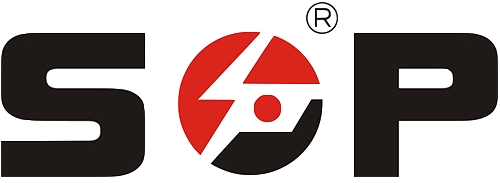Understanding Pressure Sensor Output Signals in Modern Industry
Pressure sensor output signals play a crucial role in modern industrial automation, process control, and measurement systems. These signals serve as the vital communication link between sensing elements and control systems, enabling accurate pressure monitoring and precise system responses. Understanding the various types of output signals and their characteristics is essential for engineers, technicians, and system designers to implement effective pressure measurement solutions.

Types of Pressure Sensor Output Signals
Analog Output Signals
Analog output signals remain one of the most common and versatile forms of pressure sensor outputs. The primary advantage of analog signals lies in their continuous nature, providing real-time pressure measurements across the entire sensing range. Voltage outputs typically range from 0-5V, 0-10V, or ±10V, while current outputs commonly utilize the industry-standard 4-20mA range.
The 4-20mA current loop has become particularly prevalent in industrial applications due to its excellent noise immunity and ability to detect sensor failures. The 4mA baseline allows systems to distinguish between a zero pressure reading and a fault condition, enhancing reliability and safety in critical applications.
Digital Output Signals
Digital pressure sensor output signals have gained significant traction with the advancement of industrial automation and Industry 4.0. These signals offer superior accuracy, noise immunity, and the ability to transmit additional diagnostic information alongside pressure measurements. Common digital interfaces include I2C, SPI, and various industrial fieldbus protocols.
Digital outputs enable direct integration with microcontrollers and PLCs, simplifying system design and reducing the need for signal conditioning. They also support multi-parameter sensing, allowing a single sensor to provide pressure, temperature, and diagnostic data through the same communication channel.
Signal Processing and Conditioning
Amplification and Scaling
Raw pressure sensor output signals often require amplification and scaling to match system requirements. Signal conditioning circuits enhance weak sensor outputs and normalize them to standardized ranges. This process involves careful calibration to maintain measurement accuracy while maximizing the usable signal range.
Modern pressure sensors frequently incorporate integrated signal conditioning, providing temperature compensation, linearity correction, and calibrated outputs. These features simplify system integration and improve overall measurement reliability.
Noise Reduction and Filtering
Environmental noise and electromagnetic interference can significantly impact pressure sensor output signals. Implementing proper filtering techniques becomes essential for maintaining measurement accuracy. Common approaches include low-pass filters, differential signaling, and digital filtering algorithms.
Advanced signal processing techniques, such as moving averages and Kalman filtering, help eliminate transient disturbances while preserving rapid pressure changes that may be critical for system operation.
Application-Specific Considerations
Industrial Process Control
Industrial applications often require pressure sensor output signals that comply with specific standards and safety requirements. The selection of output signal type must consider factors such as transmission distance, environmental conditions, and integration with existing control systems. HART protocol and Foundation Fieldbus have become popular choices for process control applications, offering advanced diagnostics and remote configuration capabilities.

Automotive and Transportation
Automotive pressure sensors demand output signals compatible with vehicle communication networks and control modules. CAN bus and LIN interfaces are commonly used, providing robust communication in challenging automotive environments. These sensors must maintain accuracy despite vibration, temperature extremes, and electromagnetic interference from vehicle systems.
Future Trends in Pressure Sensor Outputs
Smart Sensor Integration
The evolution of pressure sensor output signals continues with the emergence of smart sensors featuring advanced digital capabilities. These sensors incorporate microprocessors for local signal processing, self-diagnostics, and predictive maintenance functions. Integration with Industrial Internet of Things (IIoT) platforms enables remote monitoring and advanced analytics.
Wireless Communication
Wireless pressure sensor output signals are gaining prominence in applications where traditional wiring is impractical or cost-prohibitive. Technologies like Bluetooth Low Energy, LoRaWAN, and industrial wireless protocols offer new possibilities for pressure monitoring in remote or mobile applications. These solutions must balance power consumption with communication range and reliability requirements.
Frequently Asked Questions
What advantages do digital pressure sensor outputs offer over analog signals?
Digital pressure sensor outputs provide enhanced accuracy, better noise immunity, and the ability to transmit multiple parameters and diagnostic information. They simplify integration with modern control systems and eliminate the need for additional signal conditioning in many applications.
How does temperature affect pressure sensor output signals?
Temperature variations can impact pressure sensor accuracy and output signal stability. Modern sensors incorporate temperature compensation circuits and digital calibration to maintain measurement accuracy across their specified operating temperature range.
What considerations are important when selecting pressure sensor output signals for hazardous environments?
When choosing pressure sensor output signals for hazardous environments, factors such as intrinsic safety requirements, signal isolation, and environmental protection must be considered. Proper certifications and compliance with relevant standards are essential for safe operation.
Table of Contents
- Understanding Pressure Sensor Output Signals in Modern Industry
- Types of Pressure Sensor Output Signals
- Signal Processing and Conditioning
- Application-Specific Considerations
- Future Trends in Pressure Sensor Outputs
- Frequently Asked Questions
- When choosing pressure sensor output signals for hazardous environments, factors such as intrinsic safety requirements, signal isolation, and environmental protection must be considered. Proper certifications and compliance with relevant standards are essential for safe operation.

